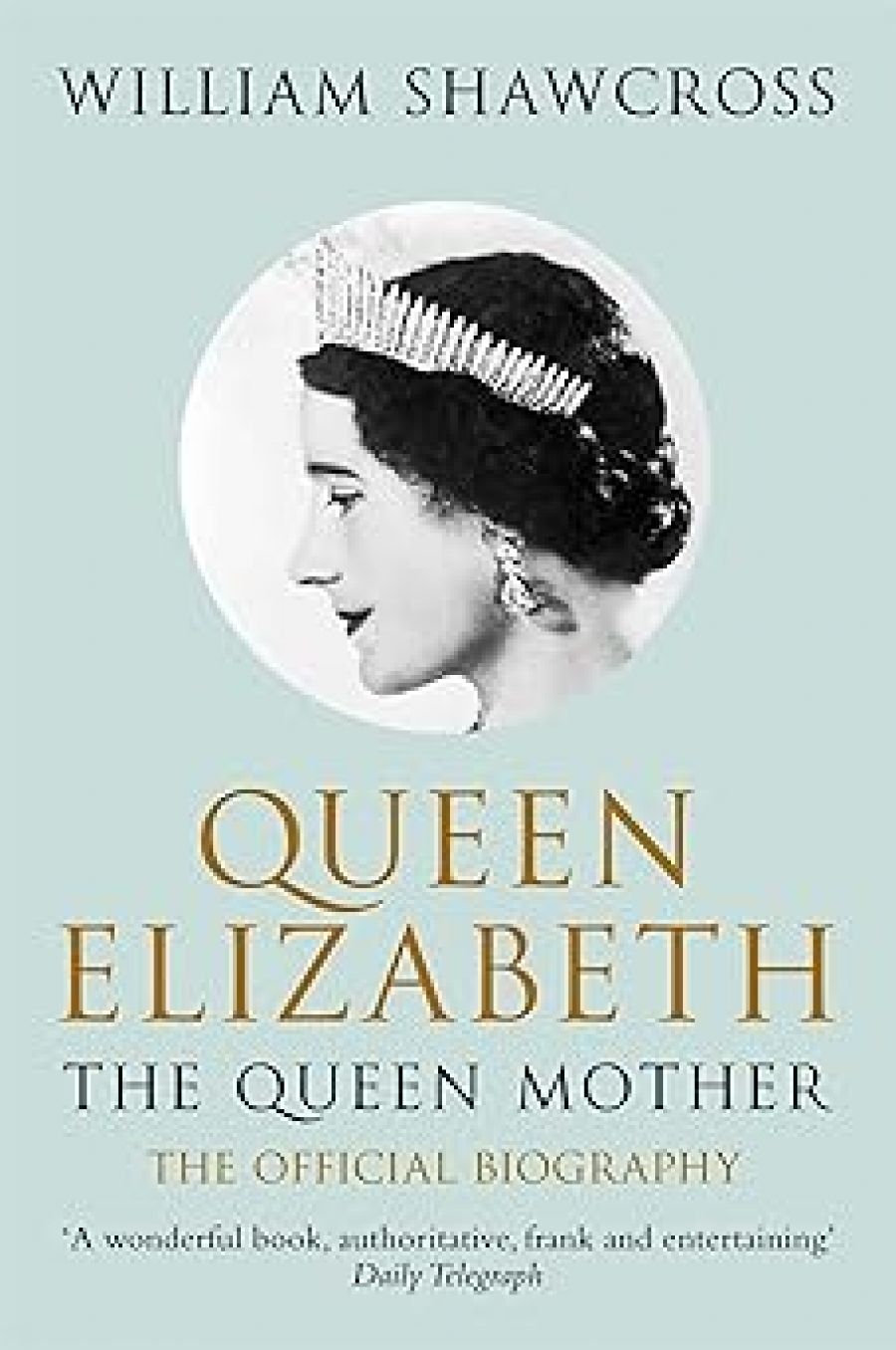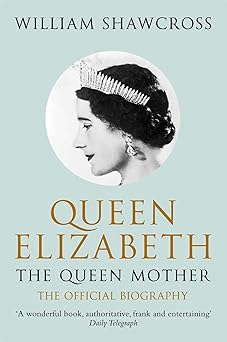
- Free Article: No
- Contents Category: Biography
- Review Article: Yes
- Article Title: The girl from Glamis
- Online Only: No
- Custom Highlight Text:
To many Australians, the Queen Mother, who died in 2002, was largely an unknown quantity. The wife of George VI and mother of the present monarch, she periodically visited this country to cut ribbons, open hospitals and wave to schoolchildren who had been bussed to sporting grounds and given flags to wave. But Australia loomed large in her private life, as evinced in this well-researched ‘official biography’ by William Shawcross, who enjoyed unfettered access to previously inaccessible royal documents. As an historical document, the book has no peer and for years to come will be an absolute necessity for political and royal researchers and biographers of the period. For such a substantial tome, it is an impressively compelling read.
- Book 1 Title: Queen Elizabeth: The Queen Mother
- Book 1 Subtitle: The Official Biography
- Book 1 Biblio: Macmillan, $59.99 hb, 1,120 pp
- Book 1 Cover Small (400 x 600):

Elizabeth Bowes Lyon, the ninth of the ten children of the earl and countess of Strathmore and Kinghorne, was born in 1900. The wealthy Bowes Lyons owned Glamis Castle in Scotland and great houses in England, and employed hundreds of servants and farm workers. Elizabeth was early accustomed to privilege and wealth, and like other girls of her class was educated at home by tutors. She played tennis and was also a good shot, though it was unusual for young ladies to handle guns in those days. During the Great War, she was introduced to the real world. She lost one brother and another was imprisoned, and Glamis became a hospital for wounded soldiers. With her mother and sisters, Elizabeth helped countless wounded men back to recovery. The first name on her family tree is Robert the Bruce (1274–1329), king of Scotland. Countless generations of royal and noble names follow. Disappointingly, Shawcross didn’t mention one of the most remarkable of them all: Elizabeth’s great-great-grandmother, whose own mother, aged eighteen, had married a man of sixty. The Queen Mother mentioned this at a lunch with some of her Bowes Lyon family which this reviewer attended. With a twinkle in her eye, she remarked: ‘Now that’s the kind of story you Aussies like!’
It was while she was being courted by her future husband, Prince Albert (‘Bertie’) – the second son of George V and Queen Mary – that Elizabeth learned that he was sharing a lover with his older brother, David, the prince of Wales. Sheila Chisholm, a Sydney girl, had arrived in London and taken it by storm. She was married to Lord Lougborough, then Sir John Millbanke and her last husband was Prince Dmitri of Russia; but around town she was known as ‘Waltzing Matilda’. George V made Bertie and his brother give her up, and Elizabeth and Bertie duly fell in love.
The other Australian connection was Lionel Logue, a Sydney-born engineer turned speech therapist, who managed to cure, or almost cure, Bertie of a prodigious stutter which had been a continual source of embarrassment. George V was a hard, unloving father: after all, he sequestered his fifth son, John, an epileptic. Bertie, born a left-hander, had been made to use his right hand. He was incapable of making speeches, and, until she heard of Logue, his new wife despaired of the impediment being overcome.
In 1927, shortly after their marriage, the young duke and duchess of York embarked on a six-month tour of the then Empire, during which Bertie opened Australia’s new Parliament House, in Canberra. Elizabeth wrote: ‘The camera lights in the Senate Chamber raised the temperature to 80 degrees and while Bertie was making his speech a plane crashed nearby killing the pilot.’
Shawcross reveals some political gems about Elizabeth and her family. She hated the spectre of British decline but liked Labour leader James Callaghan, who succeeded Harold Wilson as prime minister in 1976. She was always asking after his Welsh constituents. She liked traditional unionists, as did her husband and father-in-law. After a visit to the Smithfield Markets, she was invited by one union leader, Ron Todd, to become an honorary member of his union, and was reminded that Ernie Bevin had made the same offer to her husband who had accepted. She thus became an honorary ‘Bummaree’ – the names given to Smithfield porters – and told Todd how much she liked and respected Bevin, describing him as a ‘proper Englishman’.
Elizabeth’s attitude to Margaret Thatcher was ambivalent, and she wasn’t too happy about the country going to war over the Falklands in 1982. On the other hand, she took Thatcher’s side over the vexed question of Rhodesian independence and watched in horror as Robert Mugabe destroyed Zimbabwe. The removal of South Africa’s apartheid government pleased her no end.
The Queen Mother’s life was a remarkable one. She was born the year before the death of Queen Victoria and was still alive, though failing, on her daughter’s Golden Jubilee in 2002. She was shocked by the divorces of three of her four royal grandchildren, as she had been by Edward VIII’s self-indulgence and abdication, which she blamed for her husband’s early death, rather ignoring smoking as a cause of lung cancer, as Shawcross politely notes.
Unwittingly, William Shawcross has done local republicanism a great favour. He underscores the irrelevance of the Queen Mother’s family to contemporary Australia. Hers was a way of life, elegant and privileged, that is still enjoyed by her royal descendants, who are less interesting than the lady herself and who, like her, are utterly removed from everyday Australian life.


Comments powered by CComment